She is remembered as Fort Worth’s first postmistress.
Which she wasn’t.
What she was was Fort Worth’s second postmistress, an art teacher, feminist/suffragist, and civic activist.
And she had in-laws who would liven up any family reunion.
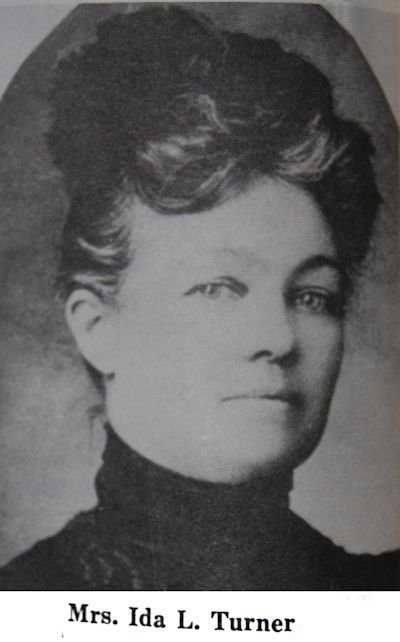 Ida Loving was born in Mississippi in 1856. Her grandfather was Fielding Davis, a Mississippi planter, slave owner, and cousin of Jefferson Davis.
Ida Loving was born in Mississippi in 1856. Her grandfather was Fielding Davis, a Mississippi planter, slave owner, and cousin of Jefferson Davis.
 Ida and her sisters Lydia (Lilly) and Fielding Davis (named for their grandfather) came to Fort Worth by stagecoach in 1874 with their mother, Mary Davis Loving. They lived in a log cabin where today’s intersection of Main and 4th streets is.
Ida and her sisters Lydia (Lilly) and Fielding Davis (named for their grandfather) came to Fort Worth by stagecoach in 1874 with their mother, Mary Davis Loving. They lived in a log cabin where today’s intersection of Main and 4th streets is.
 In 1875 Ida married John W. Turner. Their daughter Alma was born in 1876.
In 1875 Ida married John W. Turner. Their daughter Alma was born in 1876.
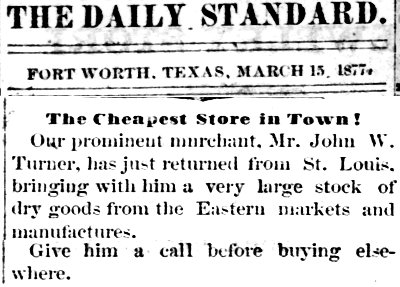 John W. Turner was a dry goods merchant.
John W. Turner was a dry goods merchant.
 John W. Turner was still a dry goods merchant in 1880. Note that by 1880 Ida Turner’s family had a third “Fielding”: Ida’s daughter.
John W. Turner was still a dry goods merchant in 1880. Note that by 1880 Ida Turner’s family had a third “Fielding”: Ida’s daughter.
 By 1883 John W. Turner had traded the cash box for the assayer’s scale: He owned silver mines in Mexico.
By 1883 John W. Turner had traded the cash box for the assayer’s scale: He owned silver mines in Mexico.
 In the 1885 city directory Turner was listed as a “miner,” although he still had an address in Fort Worth.
In the 1885 city directory Turner was listed as a “miner,” although he still had an address in Fort Worth.
 But by 1886 John W. Turner was in Mexico to stay, having bought a hacienda with plans to build a paper mill.
But by 1886 John W. Turner was in Mexico to stay, having bought a hacienda with plans to build a paper mill.
The Star-Telegram later wrote that Turner was killed in a revolution in Mexico.
 On her own, by 1888 Ida was teaching art—and residing—at Texas Wesleyan College on Cannon Street (today the site of Green B. Trimble Technical High School).
On her own, by 1888 Ida was teaching art—and residing—at Texas Wesleyan College on Cannon Street (today the site of Green B. Trimble Technical High School).
She had studied art in New York.
 In 1889-1890 Ida Turner was active in three major exhibitions: the Texas Spring Palace exhibition, the Texas state fair, and the World’s Fair.
In 1889-1890 Ida Turner was active in three major exhibitions: the Texas Spring Palace exhibition, the Texas state fair, and the World’s Fair.
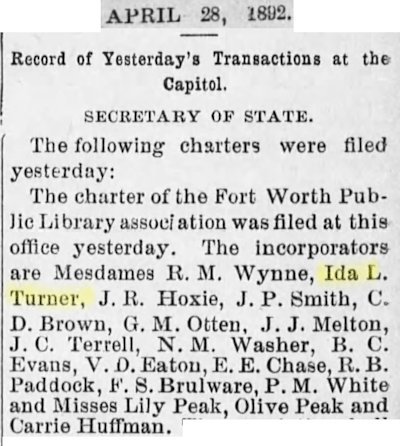 She also was one of the incorporators of the Fort Worth Public Library Association.
She also was one of the incorporators of the Fort Worth Public Library Association.
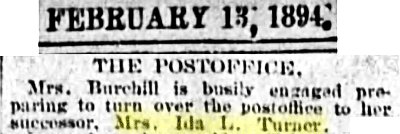 In 1894 President Cleveland appointed Ida Turner to be Fort Worth’s second postmistress. She took over from Belle Burchill. Mrs. Turner would serve through President McKinley’s truncated term in 1901.
In 1894 President Cleveland appointed Ida Turner to be Fort Worth’s second postmistress. She took over from Belle Burchill. Mrs. Turner would serve through President McKinley’s truncated term in 1901.
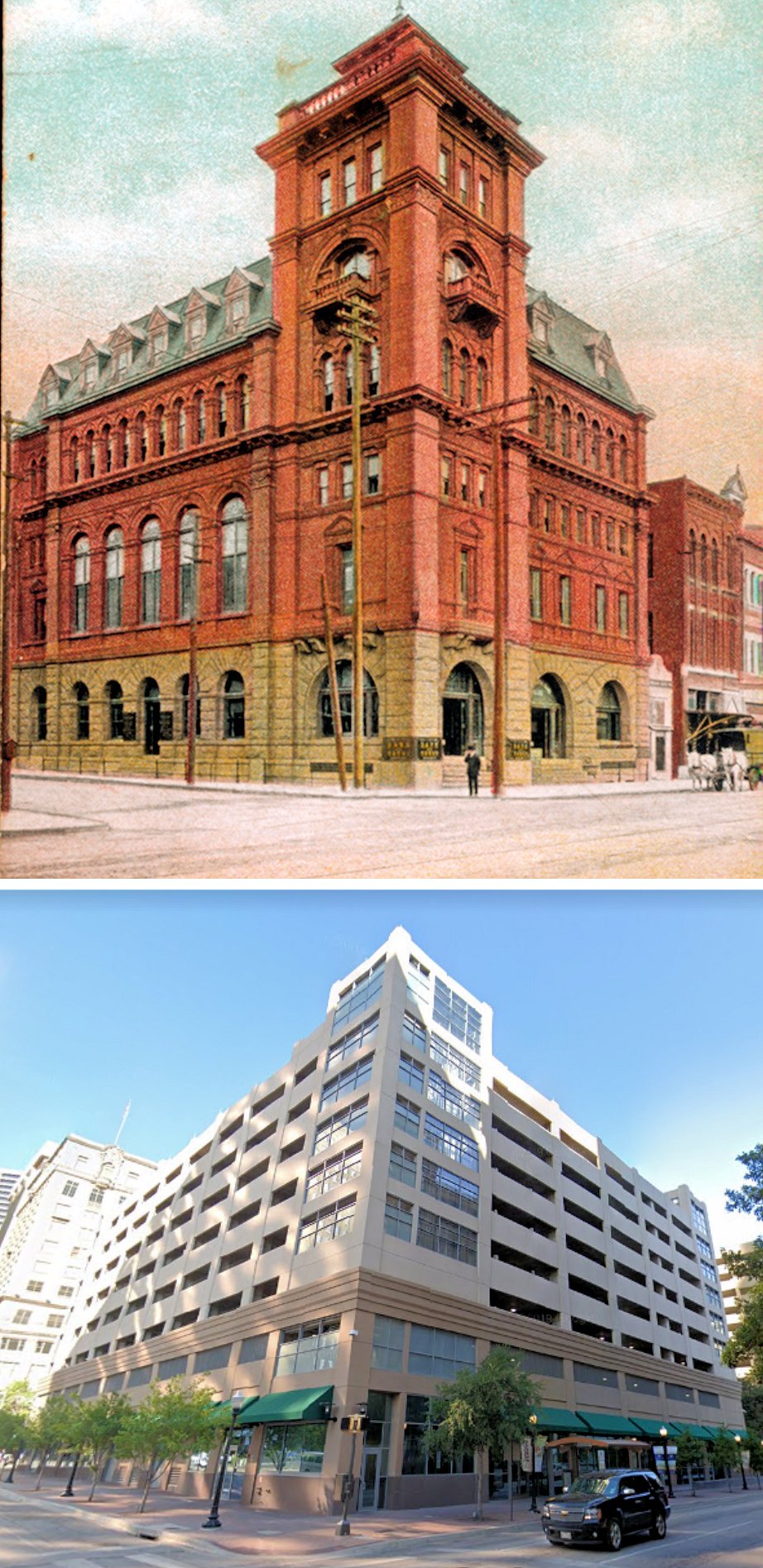
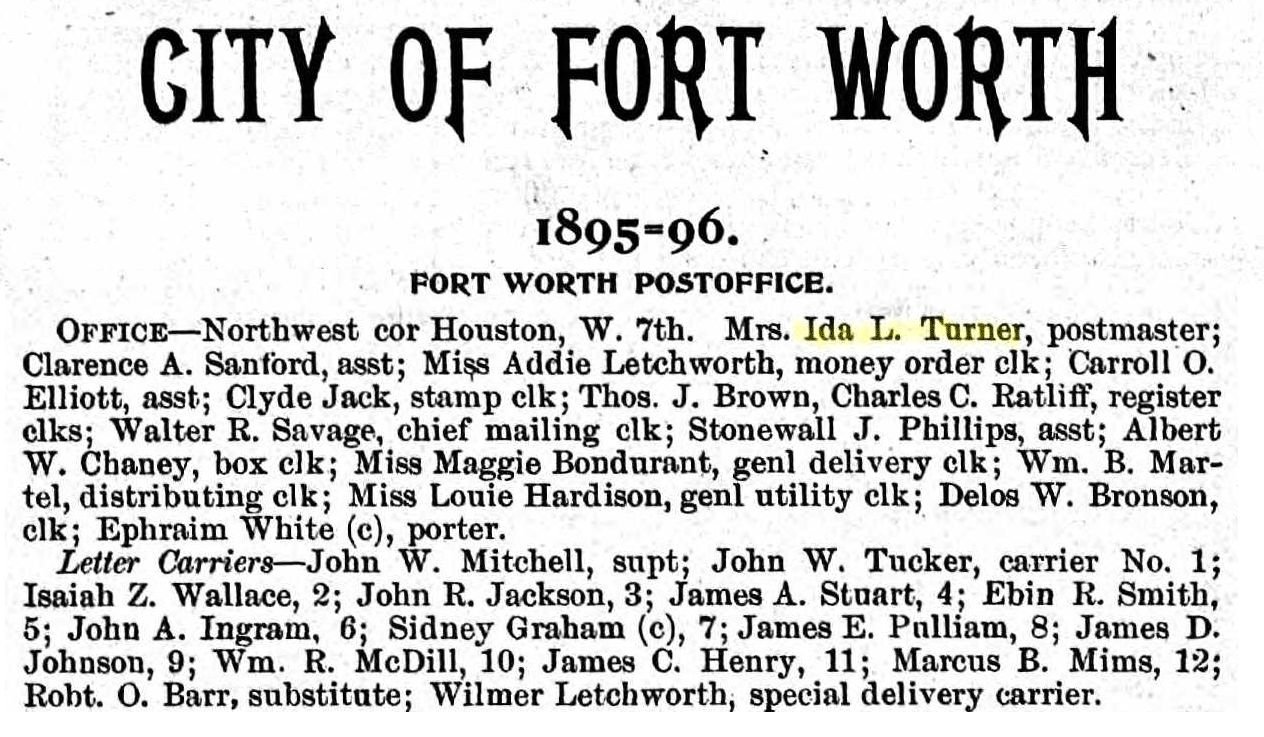 When Turner took office in 1894 the post office was housed in the Board of Trade building at Houston and 7th streets (a parking garage stands there today). Her staff had twelve letter carriers.
When Turner took office in 1894 the post office was housed in the Board of Trade building at Houston and 7th streets (a parking garage stands there today). Her staff had twelve letter carriers.
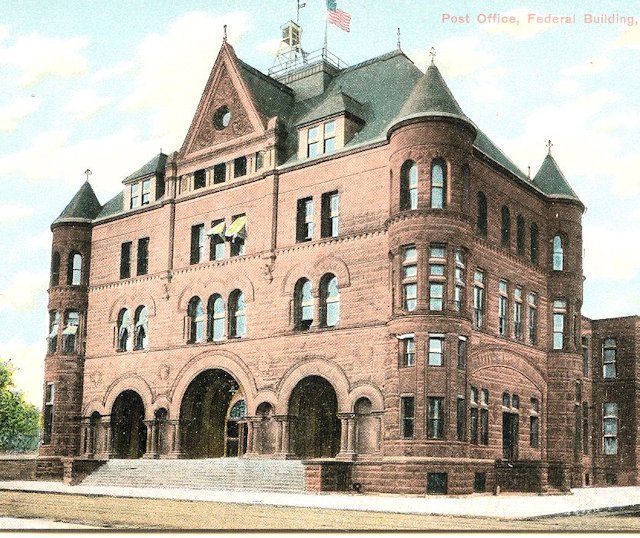
 The post office moved to the federal building/post office on Jennings Avenue when that building opened in 1896. That was the year Mrs. Turner established rural free delivery for Fort Worth.
The post office moved to the federal building/post office on Jennings Avenue when that building opened in 1896. That was the year Mrs. Turner established rural free delivery for Fort Worth.
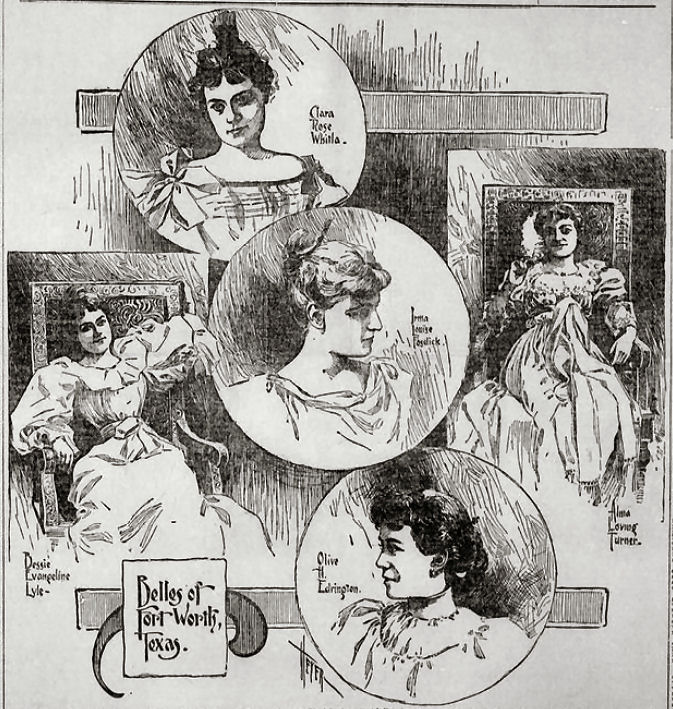 Daughter Alma (far right in illustration) was a debutante in 1896.
Daughter Alma (far right in illustration) was a debutante in 1896.
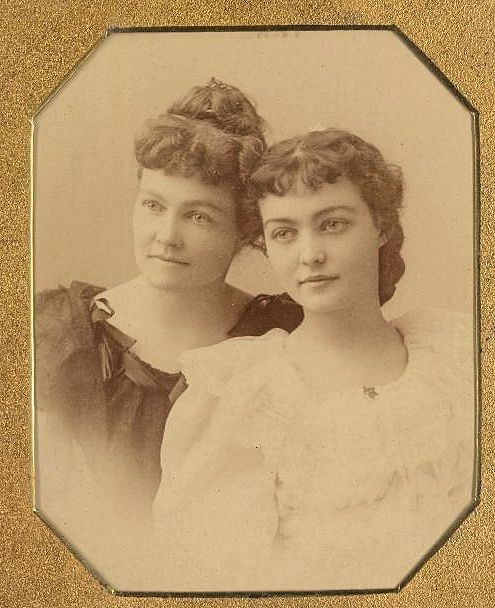 A portrait of Ida Loving Turner and daughter Alma circa 1900. (Photo from Fort Worth Museum of Science and History.)
A portrait of Ida Loving Turner and daughter Alma circa 1900. (Photo from Fort Worth Museum of Science and History.)
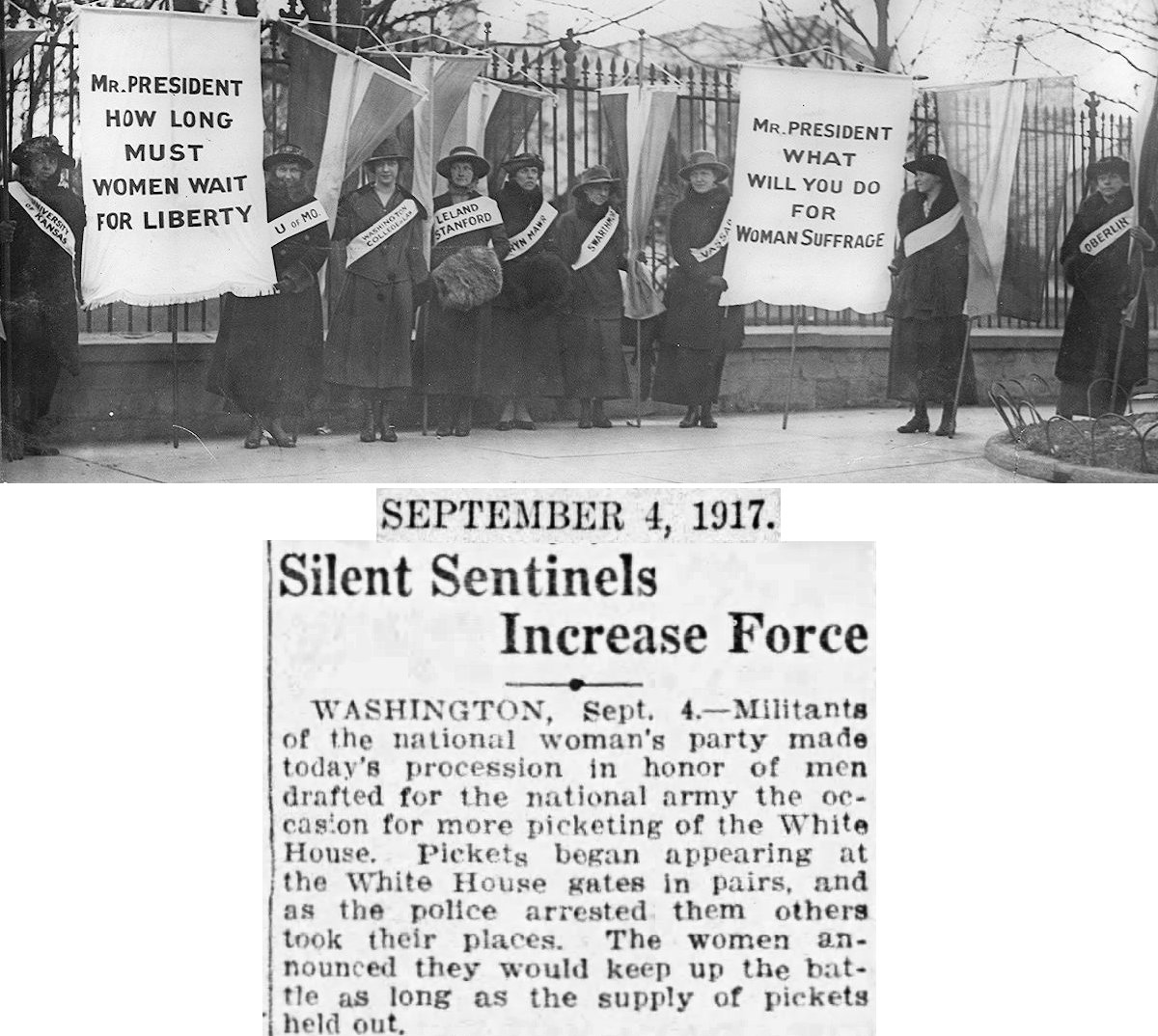 Fast-forward seventeen years. Ida Turner was a feminist/suffragist and member of the National Woman’s Party, which in 1917 picketed the White House to honor draftees and to demand that women be given the right to vote. (Photo from Wikipedia.)
Fast-forward seventeen years. Ida Turner was a feminist/suffragist and member of the National Woman’s Party, which in 1917 picketed the White House to honor draftees and to demand that women be given the right to vote. (Photo from Wikipedia.)
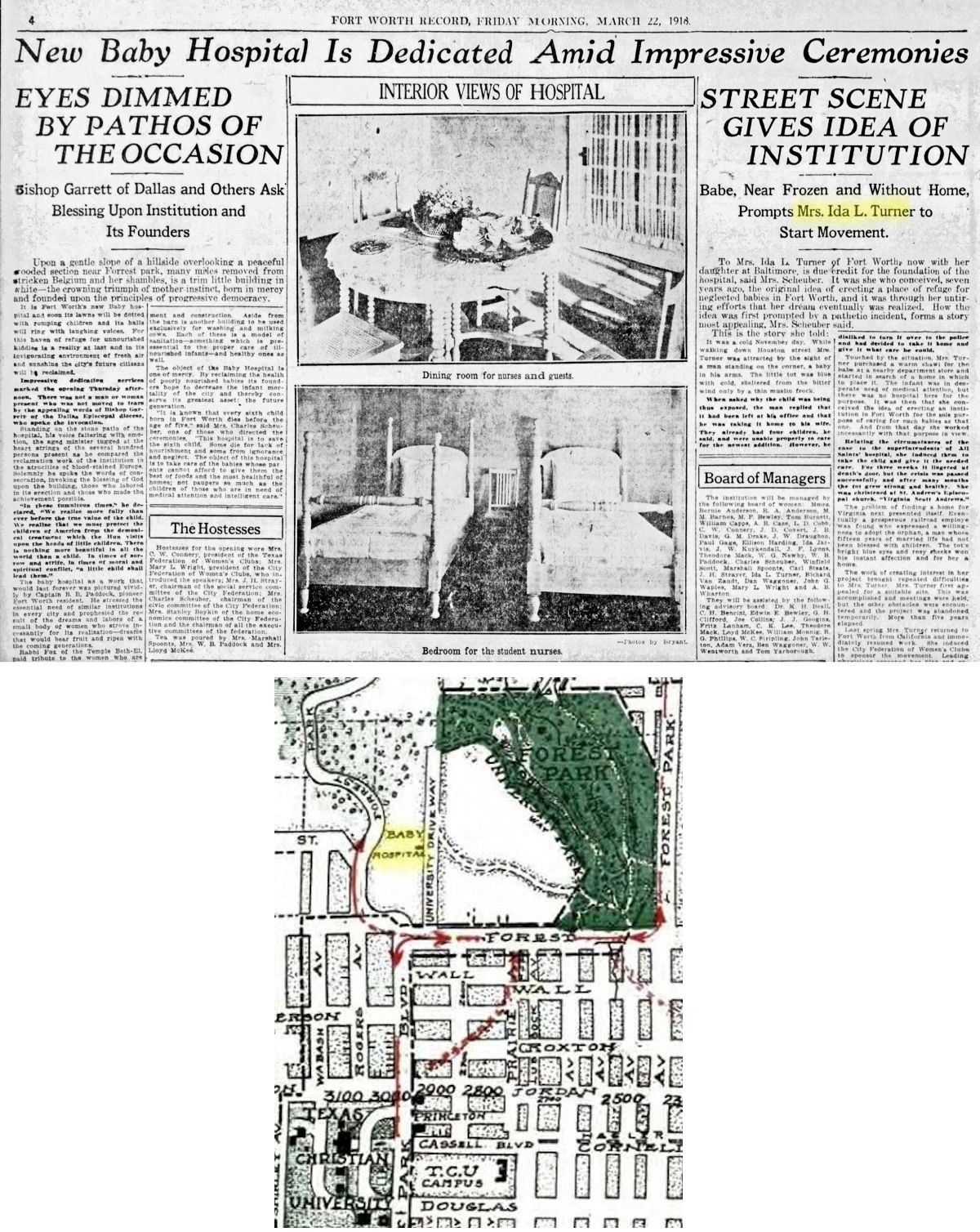 One cold winter day about 1910 Mrs. Turner was walking down Houston Street when she saw a man holding a baby. She saw that the baby was shivering and asked the man why the baby was underdressed in such cold. He said that the baby had been abandoned at his place of work and that although he had four children of his own and felt he could not take care of a fifth child, he did not want to relinquish the child to police. Mrs. Turner took the baby, wrapped it in a shawl, and began looking for a temporary home for the baby, which she found in All Saints Hospital. A childless couple later adopted the baby. That incident inspired Mrs. Turner to work to establish a hospital for needy infants.
One cold winter day about 1910 Mrs. Turner was walking down Houston Street when she saw a man holding a baby. She saw that the baby was shivering and asked the man why the baby was underdressed in such cold. He said that the baby had been abandoned at his place of work and that although he had four children of his own and felt he could not take care of a fifth child, he did not want to relinquish the child to police. Mrs. Turner took the baby, wrapped it in a shawl, and began looking for a temporary home for the baby, which she found in All Saints Hospital. A childless couple later adopted the baby. That incident inspired Mrs. Turner to work to establish a hospital for needy infants.
The result in 1917 was Fort Worth Baby Hospital, which evolved into Fort Worth Children’s Hospital. The baby hospital was located north of TCU.

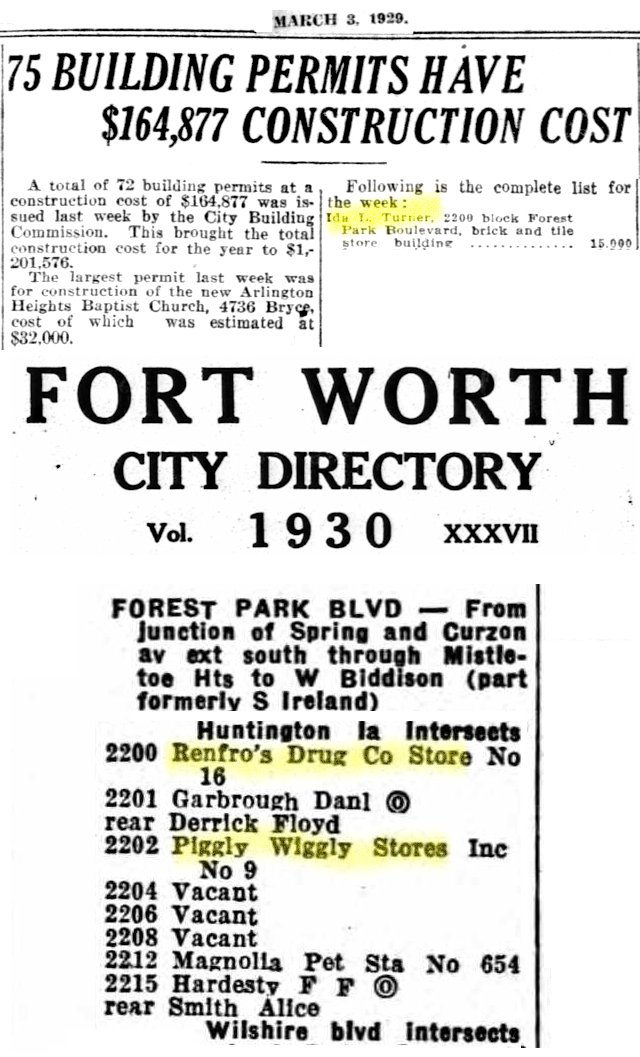 In 1929 Mrs. Turner bought the northwest corner of the 2200 block of Forest Park Boulevard and built a commercial building of brick and tile. She named the building after daughter Alma.
In 1929 Mrs. Turner bought the northwest corner of the 2200 block of Forest Park Boulevard and built a commercial building of brick and tile. She named the building after daughter Alma.
The building originally housed Renfro’s drugstore no. 16 and Piggly Wiggly store no. 9.
It later housed Robert Tillery’s grocery store.
Ida Turner’s own life aside, she had at least four interesting in-laws.
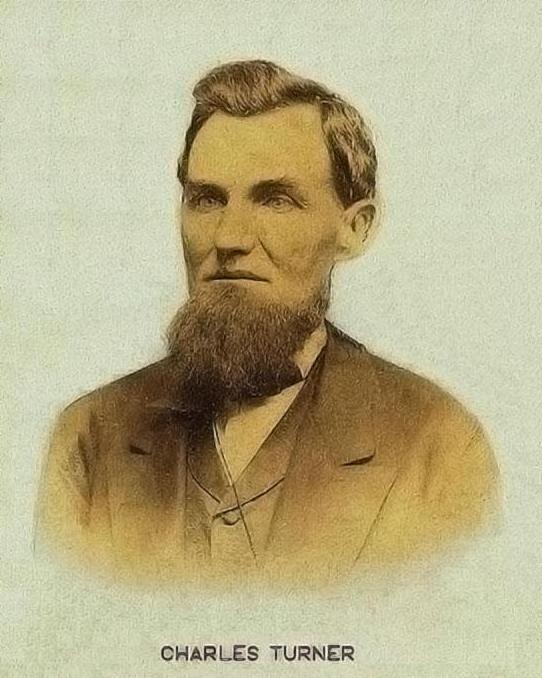 Her husband, John Whatley Turner, was a brother of Captain Charles Turner (pictured).
Her husband, John Whatley Turner, was a brother of Captain Charles Turner (pictured).
John and Charles were two of twelve children of Robert Whatley Turner and Nancy Hames Turner.
Brothers John and Charles came to Fort Worth from Shelby County in east Texas, which also sent us the Daggett brothers and Middleton Tate Johnson.
Charles Turner had ridden with Major Ripley Arnold and Middleton Tate Johnson when they scouted the location for the Army’s Fort Worth in 1849. Turner’s farm was located where Greenwood Cemetery is today.
Charles’s daughter Josephine H. Ryan was the step-granddaughter of E. M. Daggett.
Ida Turner also had three interesting brothers-in-law.
 Ida Turner’s sister Fielding Davis Loving, born 1852, in 1878 married Frank Ball. Not this Frank Ball. This is Frank M. Ball, the millionaire capitalist who lived with his mother in the Ball-Eddleman-McFarland house on Penn Street on Quality Hill.
Ida Turner’s sister Fielding Davis Loving, born 1852, in 1878 married Frank Ball. Not this Frank Ball. This is Frank M. Ball, the millionaire capitalist who lived with his mother in the Ball-Eddleman-McFarland house on Penn Street on Quality Hill.
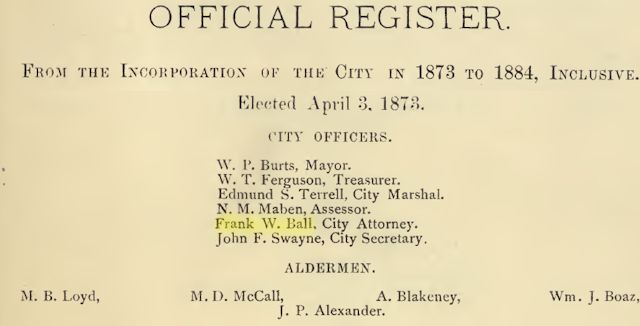 Rather, sister Fielding married Frank W. Ball, who was elected Fort Worth’s first city attorney when the city incorporated in 1873. The Star-Telegram wrote that Frank W. Ball was descended on his father’s side from Mary Ball, the mother of George Washington.
Rather, sister Fielding married Frank W. Ball, who was elected Fort Worth’s first city attorney when the city incorporated in 1873. The Star-Telegram wrote that Frank W. Ball was descended on his father’s side from Mary Ball, the mother of George Washington.
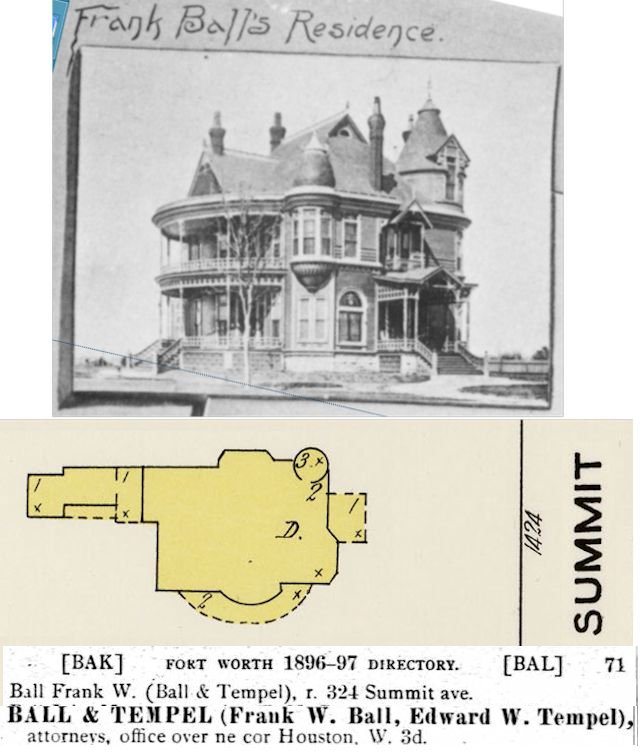 The two Frank Balls lived about four blocks apart on Quality Hill. Frank W. Ball and wife Fielding lived at 324 Summit Avenue. Samuel Burk Burnett later bought the property and built his own mansion there. That mansion was torn down in 1926.
The two Frank Balls lived about four blocks apart on Quality Hill. Frank W. Ball and wife Fielding lived at 324 Summit Avenue. Samuel Burk Burnett later bought the property and built his own mansion there. That mansion was torn down in 1926.
(Summit Avenue addresses were renumbered early in the twentieth century, and the address 324 became 1424.)
Ball’s law partner Edward Weaver Tempel was married to Frank and Fielding Ball’s daughter Ruby.
 For about ten years Frank W. Ball also was a law partner of Arlington Heights godfather Robert McCart.
For about ten years Frank W. Ball also was a law partner of Arlington Heights godfather Robert McCart.
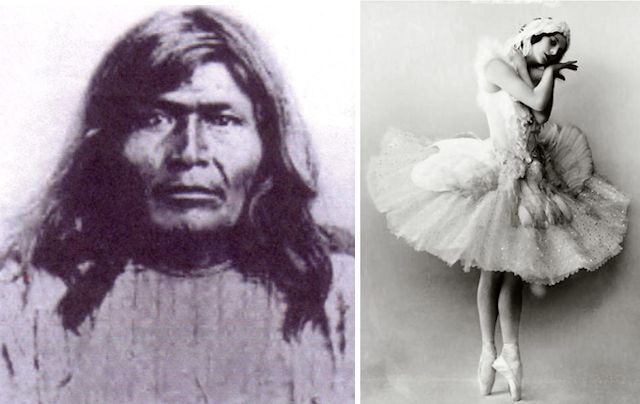 Lastly, two of Ida Turner’s sons-in-law were the connection between Victorio (1825-1880), an Apache chief who led a guerrilla war against the United States and Mexico in the nineteenth century, and the Russian ballerina Anna Pavlova.
Lastly, two of Ida Turner’s sons-in-law were the connection between Victorio (1825-1880), an Apache chief who led a guerrilla war against the United States and Mexico in the nineteenth century, and the Russian ballerina Anna Pavlova.
Say what?
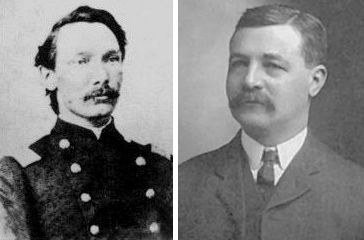 Ida Turner’s sister Lilly, born in 1853, in 1876 married General J. J. Byrne (left in photo), who had settled in Fort Worth as a land agent and surveyor for the Texas & Pacific railway.
Ida Turner’s sister Lilly, born in 1853, in 1876 married General J. J. Byrne (left in photo), who had settled in Fort Worth as a land agent and surveyor for the Texas & Pacific railway.
In 1880 Byrne was surveying land given to the railroad by the state of Texas as the T&P laid track west of Fort Worth toward El Paso. One night Byrne, all too aware of recent attacks on white settlers in the area by Victorio, had a premonition of his own death. He wrote to Lilly:
“I have made all my plans and I cannot change them with honor to myself but I feel that I shall never see my darling wife again and that this will be my final good-bye. . . . If you determine to form another earthly tie, I only ask and, dying, pray that you will counsel your best judgment to enable you to make a choice in all things worthy of you.”
A few days later, on August 13, 1880, Byrne’s premonition came true. Byrne was traveling by stagecoach from Fort Quitman to Fort Davis. The stage was attacked by Victorio’s warriors. Byrne was shot and killed.
In 1883 Lilly did “determine to form another earthly tie”: She married Max Elser (right in photo), who led a multifaceted life in Fort Worth as opera house manager, merchant, alderman, and telegraph stringer from Dallas to Fort Worth and then from Fort Worth westward as the Texas & Pacific railroad laid track to El Paso—the very area where her first husband had been killed.
Max and Lilly’s son Max Jr. would become press agent for Russian ballerina Anna Pavlova.
(I have found no connection among Ida Loving’s family from Mississippi, trailblazer Oliver Loving from Kentucky, and East Side pioneers Samuel and W. R. Loving from Tennessee.)
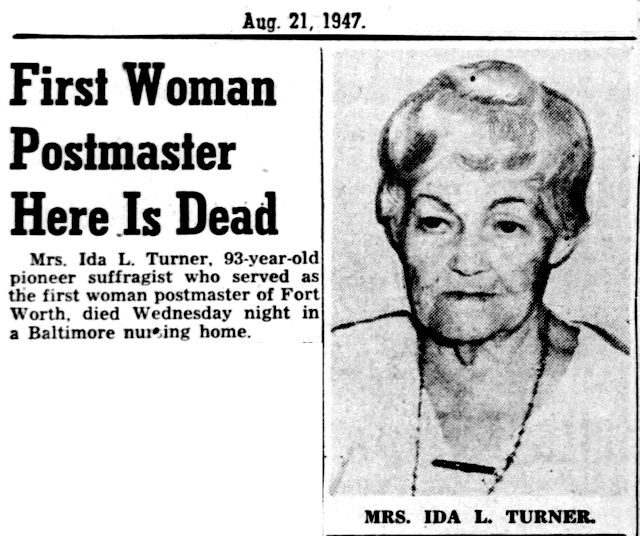 Ida Loving Turner lived the last years of her life in Baltimore with her daughter Alma and died in 1947. The Star-Telegram, perhaps misinformed by survivors, identified Mrs. Turner as Fort Worth’s first “woman postmaster.”
Ida Loving Turner lived the last years of her life in Baltimore with her daughter Alma and died in 1947. The Star-Telegram, perhaps misinformed by survivors, identified Mrs. Turner as Fort Worth’s first “woman postmaster.”
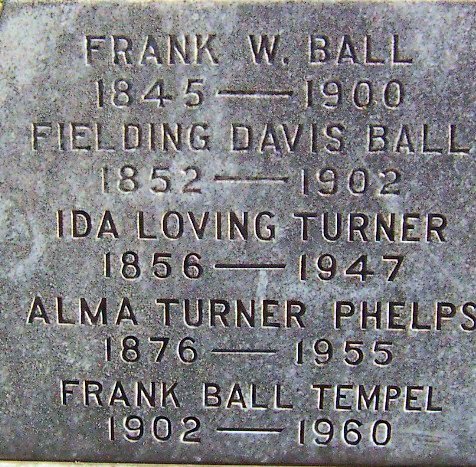 Ida Loving Turner is buried in Oakwood Cemetery.
Ida Loving Turner is buried in Oakwood Cemetery.
(Frank Ball Tempel was the son of Edward Weaver Tempel, who was Frank W. Ball’s brother-in-law and law partner. Frank W. Ball, remember, was the husband of Ida Turner’s sister Fielding Davis Loving Ball.)





